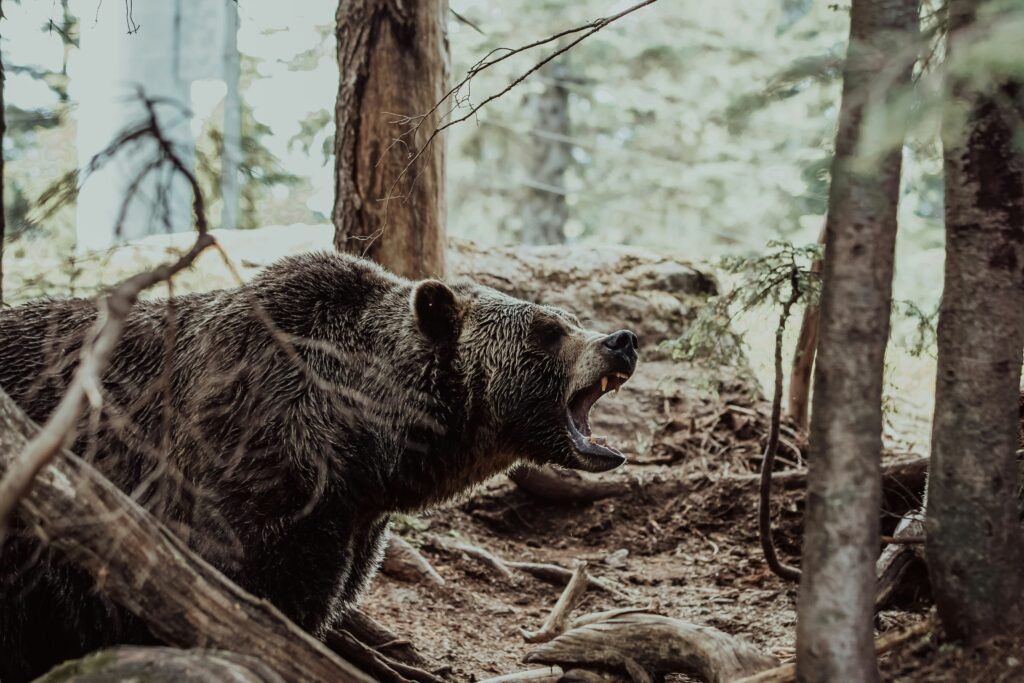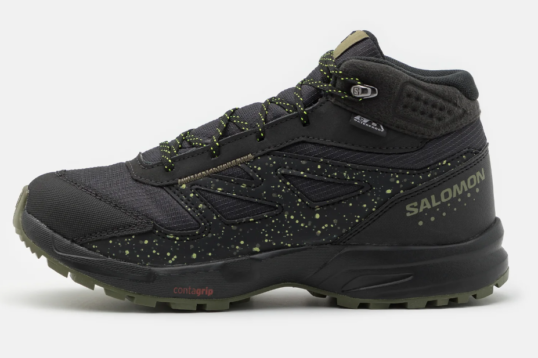Hiking through bear country can be an exhilarating experience, offering a connection to nature and wildlife that’s both humbling and majestic. However, it’s crucial to respect and understand the power and unpredictability of bears in the wild. This comprehensive guide should help equip you with the necessary knowledge of basic bear safety, and strategies to hike safely through bear habitats, ensuring your outdoor adventures remain memorable for all the right reasons.
TL;DR
- Understand Bear Behavior: Know the types of bears (grizzly, black, polar) and their behaviors, including feeding patterns, mating and motherhood, territory, and seasonal activities like hibernation and hyperphagia.
- Preparing for Your Hike: Research bear activity in the area, carry bear spray, noise-making devices, and bear-proof containers, wear appropriate clothing to minimize scent.
- On the Trail: Make noise to alert bears, hike in groups, select trails with good visibility, be vigilant for bear signs, and handle food properly to avoid attracting bears.
- If You Encounter a Bear: Assess the bear’s behavior, recognize warning signs, stand your ground or back away slowly, and use bear spray if necessary. If attacked, play dead with grizzlies or fight back with black bears.
- After an Encounter: Report it to authorities, share your experience to educate others, and reflect on the encounter to improve future hiking practices.
- Conclusion: Practice bear safety to protect yourself and conserve wildlife, ensuring a safe and respectful coexistence with bears in their natural habitat.
With increasing human-bear encounters due to expanding recreational activities and habitat encroachment, the importance of bear safety cannot be overstated. Whether you’re a seasoned hiker or setting out on your first wilderness trek, this article will serve as an essential resource on bear behavior, preventative measures, and steps to take during a bear encounter.

Understanding Bear Behavior
Types of Bears Encountered in North America
When hiking through bear country in North America, there are three main types of bears you may encounter:
- Grizzly Bears: Grizzly bears, also known as brown bears, are found in various regions of North America, including Alaska, western Canada, and parts of the United States. They are known for their large size and distinctive shoulder hump.
- Black Bears: Black bears are the most common bear species in North America. They can be found in forests across the continent, from Alaska to Florida. Despite their name, black bears can range in color from black to brown, cinnamon, or even blonde.
- Polar Bears: Polar bears are primarily found in the Arctic regions of North America, including Alaska and Canada. They are well-adapted to the cold climate and are known for their white fur and excellent swimming abilities.
Bear Biology and Behavior
To hike safely through bear country, it’s essential to understand the biology and behavior of bears. This knowledge will help you anticipate their actions and make informed decisions to avoid potential conflicts. Here are some key aspects of bear behavior:
Feeding Patterns
Bears are omnivorous creatures, meaning they eat both plant matter and meat. Their diet can vary depending on the season and availability of food sources. While bears primarily feed on vegetation, they can also consume small mammals, fish, and carrion.
Mating and Motherhood
Bears have a specific mating season, which varies depending on the species and location. During this time, male bears compete for the attention of female bears. Once a female bear mates, she enters a period of delayed implantation, where the fertilized egg does not immediately attach to the uterus. Cubs are typically born during the winter months while the mother is in hibernation.
Territory and Range
Bears are territorial animals and have a defined home range that they defend against other bears. The size of their territory can vary depending on factors such as food availability and population density. Bears mark their territory through scent marking and other visual cues.
Seasonal Considerations
Understanding the seasonal behavior of bears is crucial for hiking safely through bear country. Here are two important seasonal considerations:
Hibernation and Hyperphagia
In regions where bears hibernate, they enter a state of dormancy during the winter months. Before hibernation, bears undergo a period of hyperphagia, where they consume large amounts of food to build up fat reserves. This behavior is essential for their survival during hibernation.
Spring Awakening
As winter ends and spring arrives, bears emerge from their dens and begin searching for food. This period is known as the spring awakening. Bears are particularly active during this time as they replenish their depleted energy reserves.
Fall Foraging
In preparation for the upcoming winter, bears engage in intense foraging during the fall. They consume large quantities of food to build up fat reserves for hibernation.

Preparing for Your Hike
Before embarking on a hike through bear country, proper preparation is key to ensuring your safety. Here are some essential steps to take:
Research and Awareness
Research the specific area you plan to hike in and familiarize yourself with any recent bear activity reports. This information will give you insights into bear behavior and potential risks in the area. Additionally, be aware of any local regulations or advisories regarding bear encounters.
Hiking Gear Essentials
Having the right gear can significantly enhance your safety while hiking through bear country. Here are some essential items to include in your hiking gear:
- Bear Spray: Bear spray is a highly effective deterrent against bear attacks. It should be easily accessible and carried in a holster on your belt or backpack strap. Familiarize yourself with how to use bear spray correctly before your hike.
- Noise-Making Devices: Carrying noise-making devices, such as bells or whistles, can help alert bears to your presence and reduce the risk of surprising them.
- Bear-Proof Containers: When camping in bear country, it’s important to store your food and toiletries in bear-proof containers. These containers are designed to prevent bears from accessing your supplies, reducing the likelihood of attracting them to your campsite.
- Clothing and Scent Reduction: Wearing appropriate clothing can help minimize your scent and make you less appealing to bears. Opt for neutral colors and avoid wearing strong-smelling perfumes or lotions.
On the Trail: Preventative Measures
While on the trail, there are several preventative measures you can take to minimize the risk of bear encounters. These measures include:
- Making Your Presence Known: Bears are more likely to avoid humans if they are aware of their presence. Make noise while hiking, especially in areas with limited visibility, to alert bears to your presence.
- Hiking in Groups: Hiking in a group is generally safer than hiking alone. Bears are less likely to approach a larger group of people, reducing the risk of an encounter.
- Avoiding Surprise Encounters: Be aware of your surroundings and avoid surprising bears. Make noise, especially in areas with dense vegetation or around blind corners.
- Trail Selection and Visibility: Choose well-traveled trails with good visibility. Avoid hiking in areas with dense vegetation or limited sightlines, as these can increase the chances of surprising a bear.
- Being Alert at All Times: Stay vigilant and keep an eye out for signs of bear activity, such as tracks, scat, or overturned rocks. If you notice signs of recent bear activity, adjust your route if possible.
- Proper Food Handling: Properly handling and storing food is crucial to minimize the risk of attracting bears to your campsite. Follow guidelines for cooking and eating away from your camp and store food and toiletries in bear-proof containers.
If You Encounter a Bear
Despite taking preventative measures, there is still a possibility of encountering a bear while hiking. Here’s what to do if you come face-to-face with a bear:
- Identifying Bear Behavior: Assess the bear’s behavior to determine if it is defensive or non-defensive. Defensive bears may exhibit signs of stress or aggression, while non-defensive bears may appear calm and uninterested.
- Warning Signs: Bears may display warning signs if they feel threatened. These signs include huffing, jaw popping, or swaying from side to side. If you observe these behaviors, the bear may be feeling stressed or agitated.
- Appropriate Responses: The appropriate response to a bear encounter depends on the bear’s behavior and the situation. In general, it’s best to:
- Standing Your Ground: If the bear is defensive but not charging, stand your ground and speak calmly to the bear. Back away slowly and avoid turning your back on the bear.
- Slowly Backing Away: If the bear is non-defensive, slowly back away while keeping an eye on the bear. Avoid sudden movements or running, as this may trigger a chase response.
- When to Use Bear Spray: If a bear charges or attacks, use bear spray as a last resort. Aim for the bear’s face and deploy the spray in short bursts.
- What to Do in an Attack: In the rare event of a bear attack, the appropriate response depends on the species:
- Playing Dead with Grizzlies: If attacked by a grizzly bear, play dead by lying flat on your stomach with your hands clasped behind your neck. Spread your legs to make it harder for the bear to flip you over.
- Fighting Back with Black Bears: If attacked by a black bear, fight back aggressively. Use any available objects as weapons and aim for the bear’s face and sensitive areas.
After an Encounter
After a bear encounter, it’s important to take the following steps:
- Reporting to Authorities: Report the bear encounter to the appropriate authorities, such as local park rangers or wildlife agencies. Provide them with detailed information about the encounter, including the location, time, and bear behavior.
- Importance of Sharing Your Experience: Sharing your bear encounter experience with others can help raise awareness and educate fellow hikers about bear safety. It can also contribute to ongoing research and conservation efforts.
- Providing Detailed Information: When sharing your experience, provide as much detail as possible. This includes the bear’s behavior, your response, and any factors that may have contributed to the encounter.
- Reflecting and Learning: Take time to reflect on the bear encounter and analyze your actions. Consider how you can adjust your future hiking practices to minimize the risk of future encounters.

Conclusion
The wilderness is a shared space where humans can coexist with majestic creatures like bears. By hiking responsibly and adopting bear safety practices, we not only protect ourselves but also contribute to the conservation of these magnificent animals. Armed with knowledge and preparedness, we can make every hike through bear country a safe and awe-inspiring journey.
![]()











